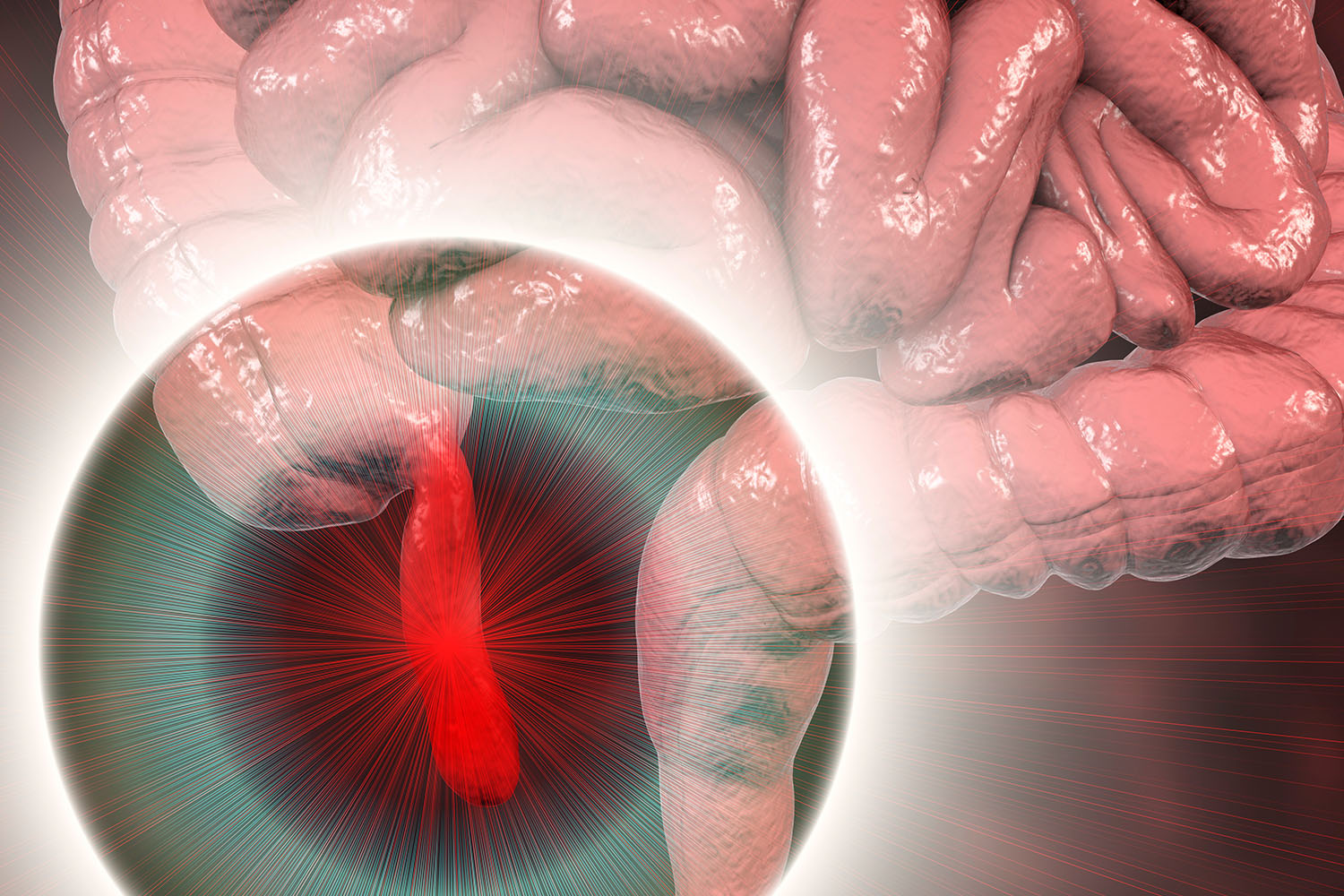Overview
Appendicitis is a common medical condition that affects individuals of all ages, characterized by inflammation of the appendix-a small, finger-shaped organ located in the lower right abdomen. Despite its prevalence, appendicitis can be a serious and potentially life-threatening condition if left untreated. In this blog, we delve into the intricacies of appendicitis, exploring its symptoms, causes, diagnosis, and treatment options.

Symptoms of Appendicitis:
Appendicitis typically presents with a constellation of symptoms that may include:
- Abdominal Pain: The hallmark symptom of appendicitis is sudden-onset abdominal pain, often starting around the belly button and migrating to the lower right quadrant of the abdomen. The pain may worsen with movement or coughing.
- Loss of Appetite: Many individuals with appendicitis experience a loss of appetite and may feel nauseous or have bouts of vomiting.
- Fever and Chills: Fever and chills may accompany appendicitis, indicating the presence of inflammation and possible infection.
- Change in Bowel Habits: Some people may experience changes in bowel habits, such as diarrhea or constipation, as a result of appendicitis.
- Localized Tenderness: Pressing on the lower right abdomen may elicit tenderness or discomfort, known as McBurney’s point tenderness, which is a classic sign of appendicitis.
Causes of Appendicitis:
The exact cause of appendicitis is not always clear, but it is often attributed to blockage or obstruction of the appendix, leading to bacterial overgrowth, inflammation, and subsequent infection. Common causes of appendiceal obstruction include:
- Fecaliths (hardened fecal matter).
- Enlarged lymphoid tissue (e.g., from infections).
- Tumors.
- Intestinal parasites.
- Foreign bodies.
Diagnosis:
Diagnosing appendicitis requires a thorough medical history, physical examination, and often additional diagnostic tests, including:
- Abdominal Examination: Healthcare providers may perform a physical examination to assess for signs of tenderness, rebound tenderness, and guarding in the abdomen.
- Blood Tests: Blood tests, such as a complete blood count (CBC) and inflammatory markers like C-reactive protein (CRP), may be ordered to assess for signs of infection and inflammation.
- Imaging Studies: Imaging tests, such as ultrasound or computed tomography (CT) scan, may be performed to visualize the appendix and evaluate for signs of inflammation or obstruction.
Treatment Options:
The primary treatment for appendicitis is surgical removal of the inflamed appendix, a procedure known as an appendectomy. In some cases, antibiotics may be prescribed to reduce inflammation and infection before surgery, particularly in uncomplicated cases or when immediate surgery is not feasible. Laparoscopic appendectomy, which involves smaller incisions and shorter recovery times, is the preferred approach for many cases of appendicitis.
Appendicitis is a common and potentially serious condition characterized by inflammation of the appendix. Recognizing the signs and symptoms of appendicitis is crucial for prompt diagnosis and treatment. If you or someone you know experiences symptoms suggestive of appendicitis, it is important to seek medical attention promptly to prevent complications and ensure optimal outcomes. With timely intervention, most individuals with appendicitis can expect a full recovery and return to normal activities.


